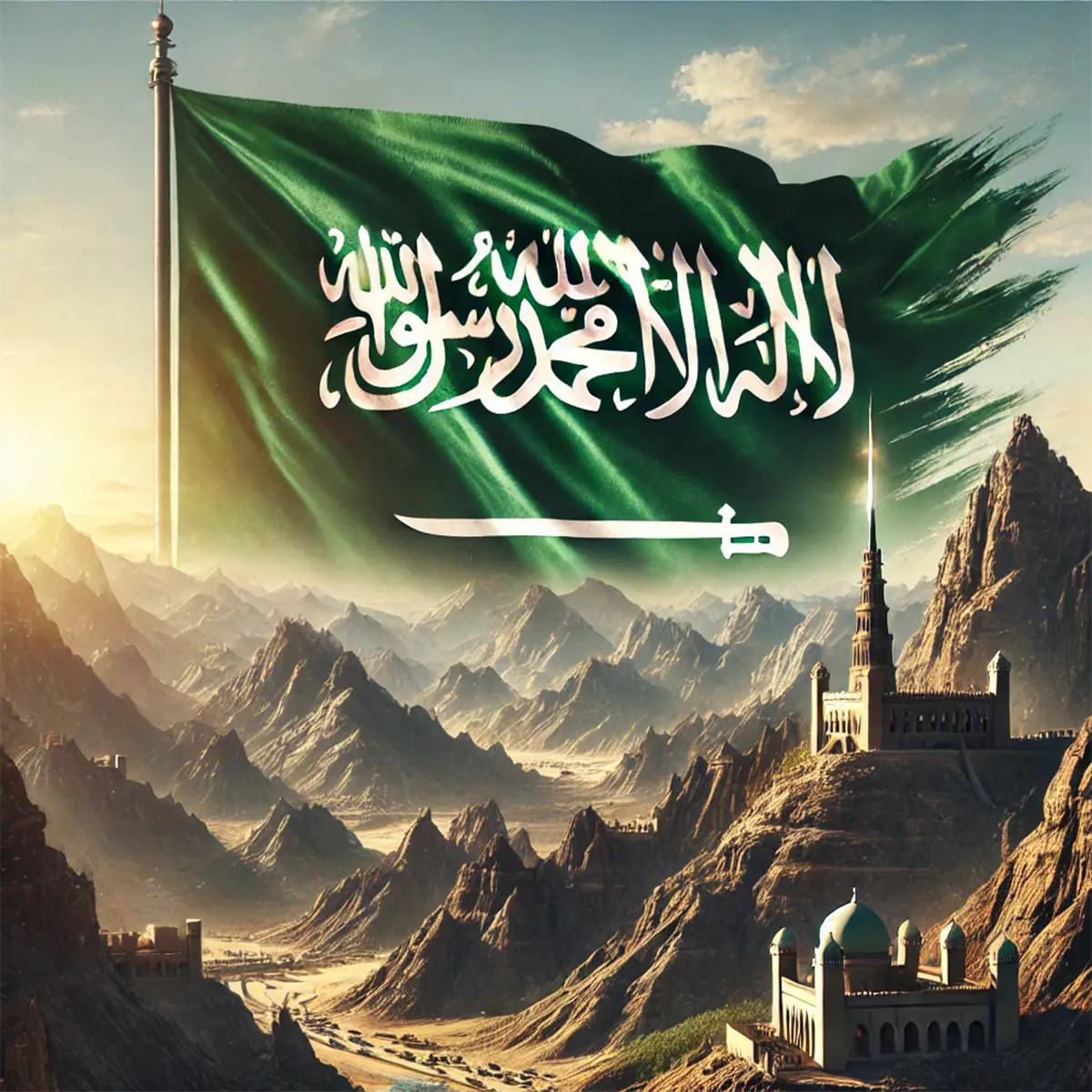The flag of Saudi Arabia, with its green color and white crescent in the center, has been flown since the first Saudi state, called the Diriyah Emirate between 1750 and 1818. With the unified king's journey to and control of Najd, the founding king, Abdul Aziz, adopted the Saudi flag. He removed the crescent moon and replaced it with the shahada "There is no God but Allah" written in white script and with a white stripe to the left of the inscription. This flag was used from 1902 to 1921.
During the journey of King Abdul Aziz and the annexation of many provinces, the country became known as the Kingdom of Najd from 1921 to 1926, and the flag was changed: the shahada became larger, the white stripe shifted to the right side, and a white sword was added at the bottom.
In the fourth stage of the Saudi flag's development, the sword was removed and the green flag was surrounded by a white frame with Tawhid (monotheism) in the center. This flag was flown from 1926 to 1932 under the name of the Kingdom of Nejd and Hijaz.

With the announcement of the establishment of the Kingdom of Saudi Arabia in 1932, the fifth and most important stage in the history of the Saudi flag began. The flag became completely green, "Tawhid" was written in white, and a white sword was depicted below it, the end of which indicated the beginning of "Tawhid".
The sixth (final) stage of the development of the Saudi flag took place during the reign of King Faisal in 1973, when it was designed by Hafez Wahba, who made some minor changes to the size of the flag and the Tauhid. He also changed the beginning and end of the white sword. The hilt became lower than the beginning of monotheism (the belief in the existence of one God) and ended at its end towards the mast, as a symbol of the end of the struggle, strength and invincibility.






